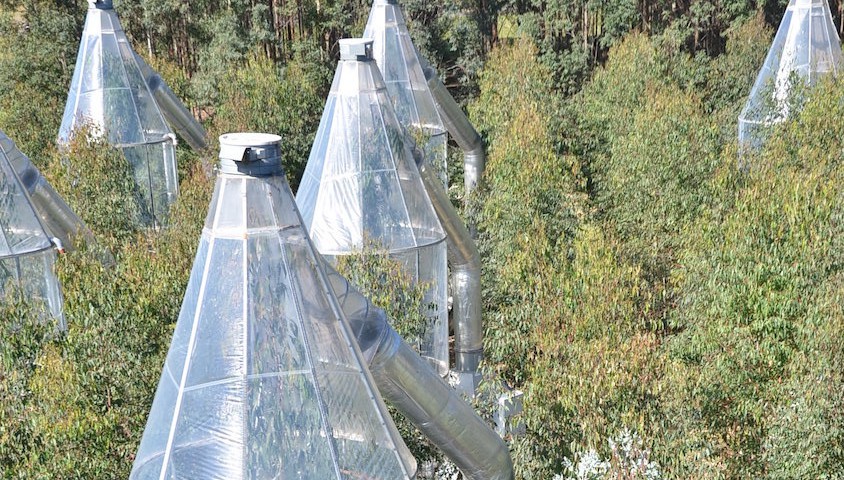New research from Western Sydney University’s Hawkesbury Institute for the Environment has revealed that, in most cases, forest red gums (Eucalyptus tereticornis) are able to adjust their physiology to warmer conditions that previously thought – but there is a limit.
In order to conduct their experiment, the researchers, lead by Dr John Drake, employed the world’s only Whole Tree Chambers, which effectively encapsulated the red gums within their own miniature atmosphere.
Twelve of these chambers were used, with six of them exposed to temperatures three degrees above the external ambient temperature. Inside the chambers, the researchers are able to measure major functions of the trees, including carbon intake, output and water usage.
Current modelling suggested that an increase of three degrees would increase respiration more than photosynthesis and thereby cause a net transfer of carbon from the trees into the atmosphere – accelerating climate change. However, the researchers found forest red gums were able to change their physiology to account for the change, and so keep net carbon transfer in balance.
That is, except in the case of heatwaves. The paper, which is published New Phytologist, demonstrates that in uncommonly hot conditions of 35 degree or more, a further warming of three or more degrees led to a strong rise in respiration and a reduction in photosynthesis, causing the positive feedback loop that would see additional carbon released into the atmosphere.
“This is the first experiment where we have been able to subject a widely distributed Australian tree species to whole-canopy warming in field conditions and measure whole-canopy carbon uptake and release via photosynthesis and respiration”, explained Drake.
“Field conditions expose trees to the natural variations in sunlight, heat conditions, activity of wood and stems, and shading from surrounding trees, giving us a representative picture of the performance of trees under real-world conditions”, he said. “These findings demonstrate that there is greater scope for trees to adjust physiologically to warming except under heatwave conditions.”
While the new research is consistent with other North American findings that demonstrate the way in which plants do work to mitigate some of the impacts of climate change, it also shows the limits to this ability.
As the regulation around tree clearing continues to be a point of contention around the country, we now have even more reason to keep the plants in the ground.


